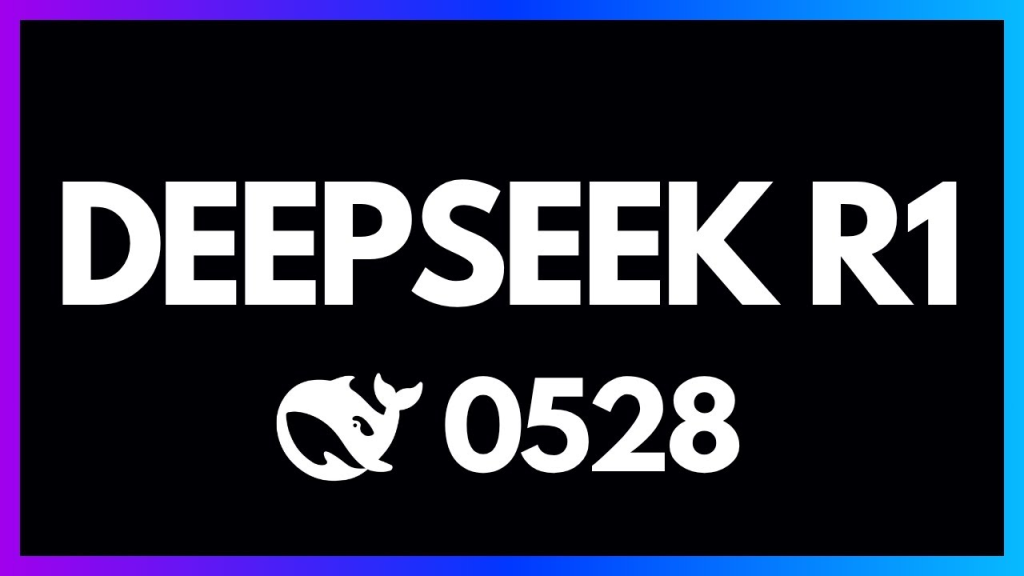How DeepSeek R1 0528 Transforms Prompting into Frontend Design: A Hands-on Case Study
When discussing large language models (LLMs) in frontend development, we often focus on productivity gains or boilerplate code generation. But what happens when an AI tool like DeepSeek R1 0528 is given not just a task, but a workflow mindset? This article explores exactly that—how DeepSeek R1 can generate complete HTML pages from a structured, multi-role prompt design, and what this reveals about the current capabilities and limitations of prompting for frontend generation.

What This Guide Aims to Show
We’re not just showcasing another AI-generated web page. This walkthrough is designed to:
- Demonstrate the current capabilities of DeepSeek R1 in frontend generation;
- Provide a reusable, scalable prompt template to generate full-featured and visually appealing HTML pages;
- Offer a breakdown of the prompt engineering logic, including its strengths, limitations, and best practices—so you can create your own highly functional AI prompts with greater clarity and purpose.
The Prompt: Simulating a Real-World Development Workflow
Here's the core of the prompt, engineered to simulate a three-role development pipeline:
Please generate a complete HTML page based on the following website idea: {Insert your concept here, e.g., a dashboard for a Bilibili content creator, featuring multiple data charts}.
Workflow
- As a veteran product manager with 20 years of experience and praise from Steve Jobs and Allen Zhang, analyze the user's intent—including implied needs—and formulate a complete feature request.
- As a meticulous UI/UX designer formerly at Apple, translate that request into a visual specification that balances aesthetics, function, and clarity for frontend execution.
- As a skilled frontend engineer, turn the specification into a working HTML file with the following standards:
- Modern HTML5 structure
- Google Fonts via CDN
- Font Awesome icons via CDN
- Responsive design
- Use open-source image CDNs like Unsplash or Picsum
- Consider best-practice color schemes and layout structures
- Use theme-appropriate fonts
- Employ semantic HTML tags (header, main, footer)
- Include all CSS inline for a single-file structure
This prompt isn’t just asking the AI to “generate a webpage.” It’s simulating how real product teams break down work—and that’s the key to unlocking better results with AI.
Why This Prompt Works
1. Single-File Output for Preview Compatibility
DeepSeek R1 currently only renders one file in its web UI. By clearly instructing the model to return a single HTML file, we ensure compatibility and preview functionality.
2. Explicit Instructions on Visual Assets
Most AI models can’t generate images directly, but they can embed links to image APIs like:
Still, this introduces risk: broken links, mismatched themes, or inaccurate representations. That said, such issues are expected when outsourcing visual decisions to a model.
3. Loose but Guided Visual Direction
Design-specific guidance (like color or layout schemes) can make output more consistent, but too much rigidity leads to template fatigue. This prompt strikes a balance, referencing design best practices without micromanaging the AI.
4. Role Simulation Enhances Logical Reasoning
DeepSeek R1 isn’t just a text generator—it’s a reasoning model. When you give it multiple roles (PM, designer, engineer), you enable it to “think through” the process. This mirrors how human teams clarify vague ideas into structured deliverables, compensating for user ambiguity or blind spots.
A Sample Case: Building a Museum Gallery Site
Let’s see how DeepSeek responds when tasked with:
"Design a museum artwork gallery website to showcase collections."
🧠 Product Manager Insight
The AI uncovers hidden needs:
- Detailed info per artwork (artist, era, description)
- Category filters (by period, artist, genre)
- Mobile-responsive layout
- Lightbox zoom effect on click
- Museum introduction + exhibition info
- Social media integration
🎨 Designer Interpretation
- Style: Minimalist, letting artworks take center stage
- Color: Neutral palette, dark accents, primary blue highlight
- Typography: Serif (Playfair Display) for headers, Sans-serif (Lato) for body
- Structure:
- Header with logo and nav
- Main grid gallery (CSS Grid)
- Footer with contact/social links
- Interactions: Hover zoom, responsive navigation, mobile-first grid
🧑💻 Frontend Implementation
- All styling via
<style>tags (inline CSS) - Fonts via Google Fonts CDN
- Icons from Font Awesome
- Sample image URLs from Picsum
- Semantic tags (
<header>,<main>,<footer>) - Grid layout using Flexbox or CSS Grid
✅ Want to explore tools that help automate HTML or design workflows like this? Check out our “Design & UI” category on AI-Kit.
What DeepSeek R1 Gets Right—and What It Doesn’t (Yet)
This type of prompt unlocks impressive results for simple web interfaces. The model demonstrates:
- Multi-stage thinking
- Clean separation of concerns
- Semantic HTML structure
- Creative visual layouts
However, it’s important to recognize the limits:
- No multi-step planning or tooling integration (yet)
- Doesn’t manage state or JavaScript interactions
- Not suitable for production-grade apps without manual refinement
As such, DeepSeek R1 is a powerful prototyping assistant, but not a full dev replacement—yet.
📌 Also consider alternatives like GPT-4, Claude 4, or Gemini for richer multi-modal reasoning or more robust frontend code synthesis.
Final Thoughts: Prompt Engineering as Product Thinking
Crafting powerful prompts isn’t just about wordplay—it’s about system design. This example shows how treating AI like a collaborator, not just a tool, allows you to simulate a full creative process.
Want to try it for yourself? You can easily adapt the prompt to generate:
- Personal portfolios
- SaaS landing pages
- Interactive dashboards
- Event showcases
- AI startup websites
The next wave of productivity may not come from better tools, but from better ways of talking to them.
🔍 Explore More on AI-Kit
If you found this useful, check out more articles and tools under:
Or browse the latest AI tools hand-picked for creators, developers, and innovators.